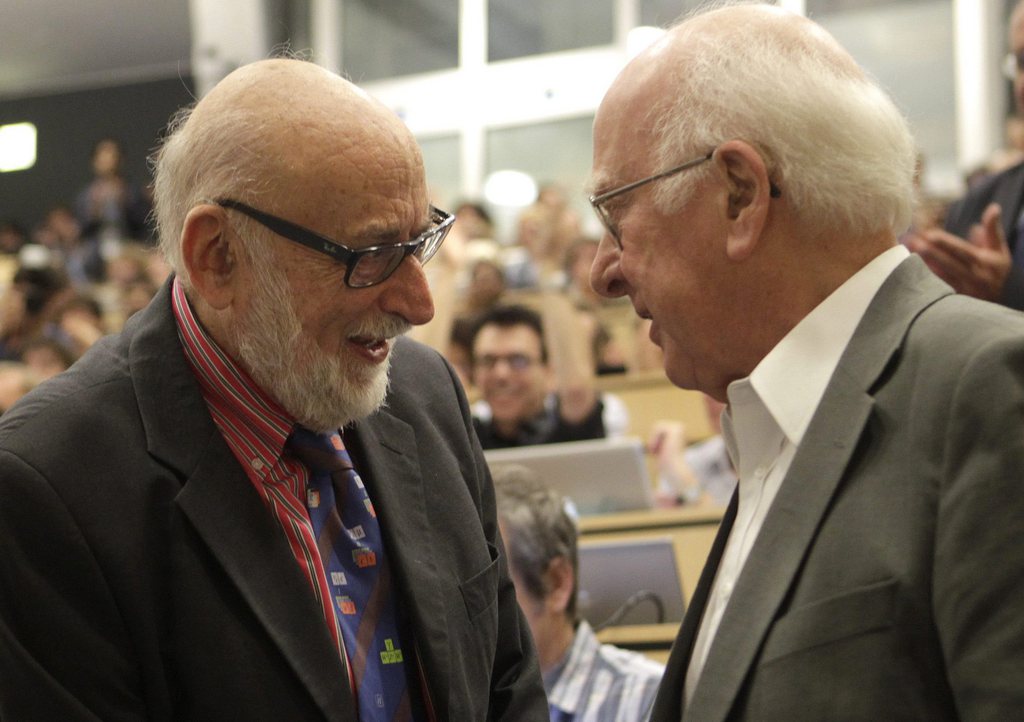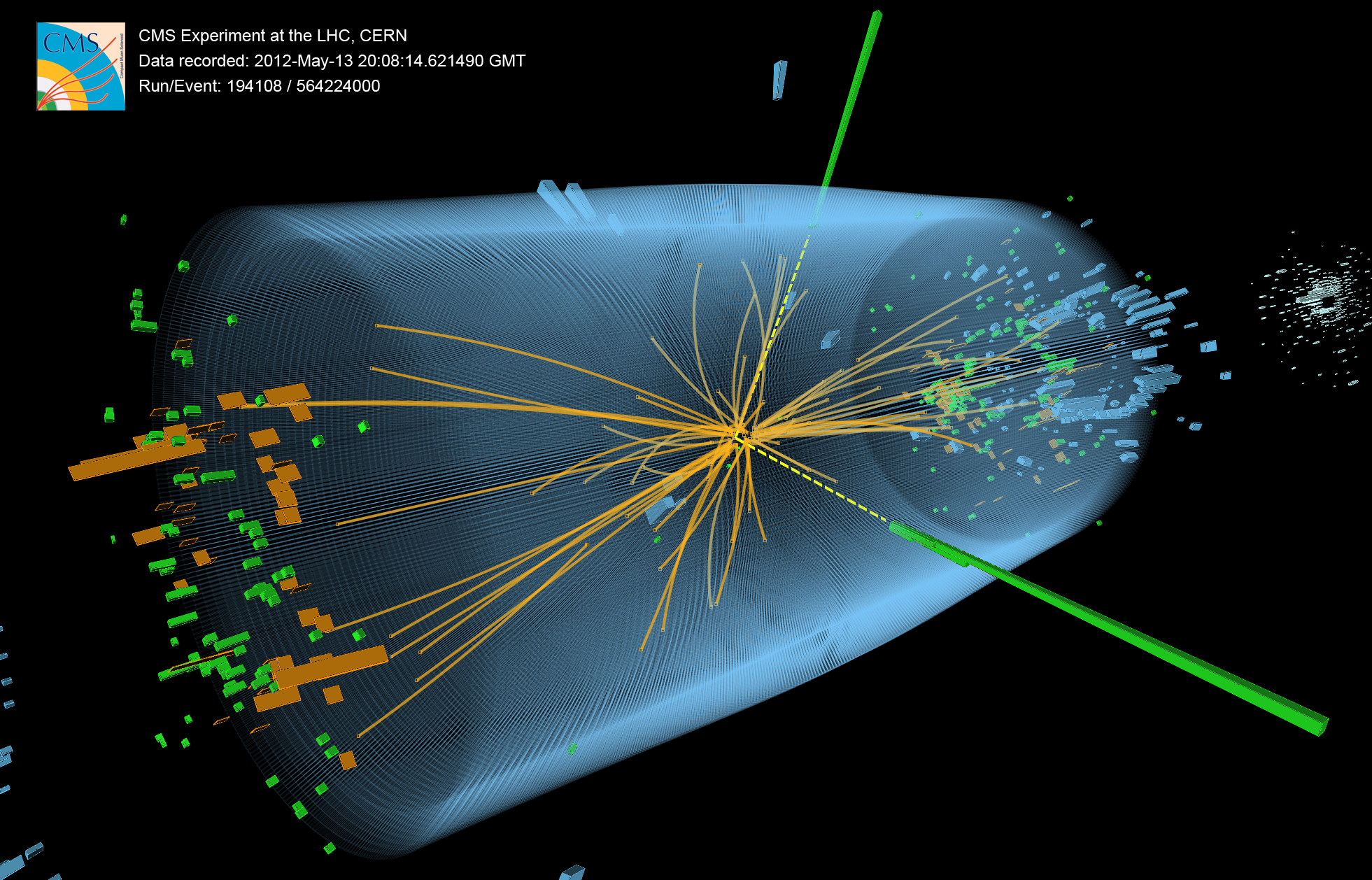Higgs and Englert win Nobel Prize for Physics

Britain’s Peter Higgs and Belgium’s François Englert have been awarded the 2013 Nobel Prize for Physics for their theoretical discoveries on how subatomic particles acquire mass.
The two scientists had been favourites to share the prize – worth eight million Swedish krona (CHF1.13 million) – after their theoretical work was finally vindicated last year by experiments at the CERN research centre’s gigantic particle collider outside Geneva.
Englert, 80, and his colleague Robert Brout, who died in 2011, were first to publish, but 84-year-old Higgs followed just a couple of weeks later and was the first person to explicitly predict the existence of a new particle.
“The awarded theory is a central part of the Standard Model of particle physics that describes how the world is constructed,” the Royal Swedish Academy of Sciences said in a statement on Tuesday.
“According to the Standard Model, everything, from flowers and people to stars and planets, consists of just a few building blocks: matter particles.”
Englert and Higgs had theorised about the existence of the particle in the 1960s to provide an answer to a riddle: why matter has mass. The tiny particle, they believed, acts like treacle on snow – causing other basic building blocks of nature to stick together, slow down and form atoms.
But decades would pass before scientists at CERN, the European Organization for Nuclear Research on the Swiss-French border, were able to confirm its existence. The European particle physics laboratory announced the news in July of last year.
The Swiss contribution
CERN is “elated” over the prize, according to panelists at a press conference held at CERN following the announcement.
The theoretical work of Higgs and Englert received confirmation from the experimental work at CERN, said CERN Director General Rolf Heuer. “You can never verify a theory completely, but experiment and theory have to go together,” he said. “They belong to one another.”
Heuer also gave credit to the many other organisations working worldwide in the field: “We should always keep in mind that this is a global effort – with a European flavour, of course.”
Swiss Minister of Research and Education Johann Schneider-Ammann also offered his congratulations to CERN and the other Swiss institutes which contributed to the building of the Large Hadron Collider at CERN – the Swiss Federal Institute of Technology, the universities of Bern, Geneva and Zurich, and the Paul Scherer Institute.
“The fact that a third Nobel prize comes to Geneva today is the well-deserved result of unique global collaboration at the highest scientific and technical levels,” he said.
Physics was the second of this year’s crop of Nobels to be announced. The prizes were first awarded in 1901 to honour achievements in science, literature and peace in accordance with the will of dynamite inventor and business tycoon Alfred Nobel

In compliance with the JTI standards
More: SWI swissinfo.ch certified by the Journalism Trust Initiative











You can find an overview of ongoing debates with our journalists here . Please join us!
If you want to start a conversation about a topic raised in this article or want to report factual errors, email us at english@swissinfo.ch.